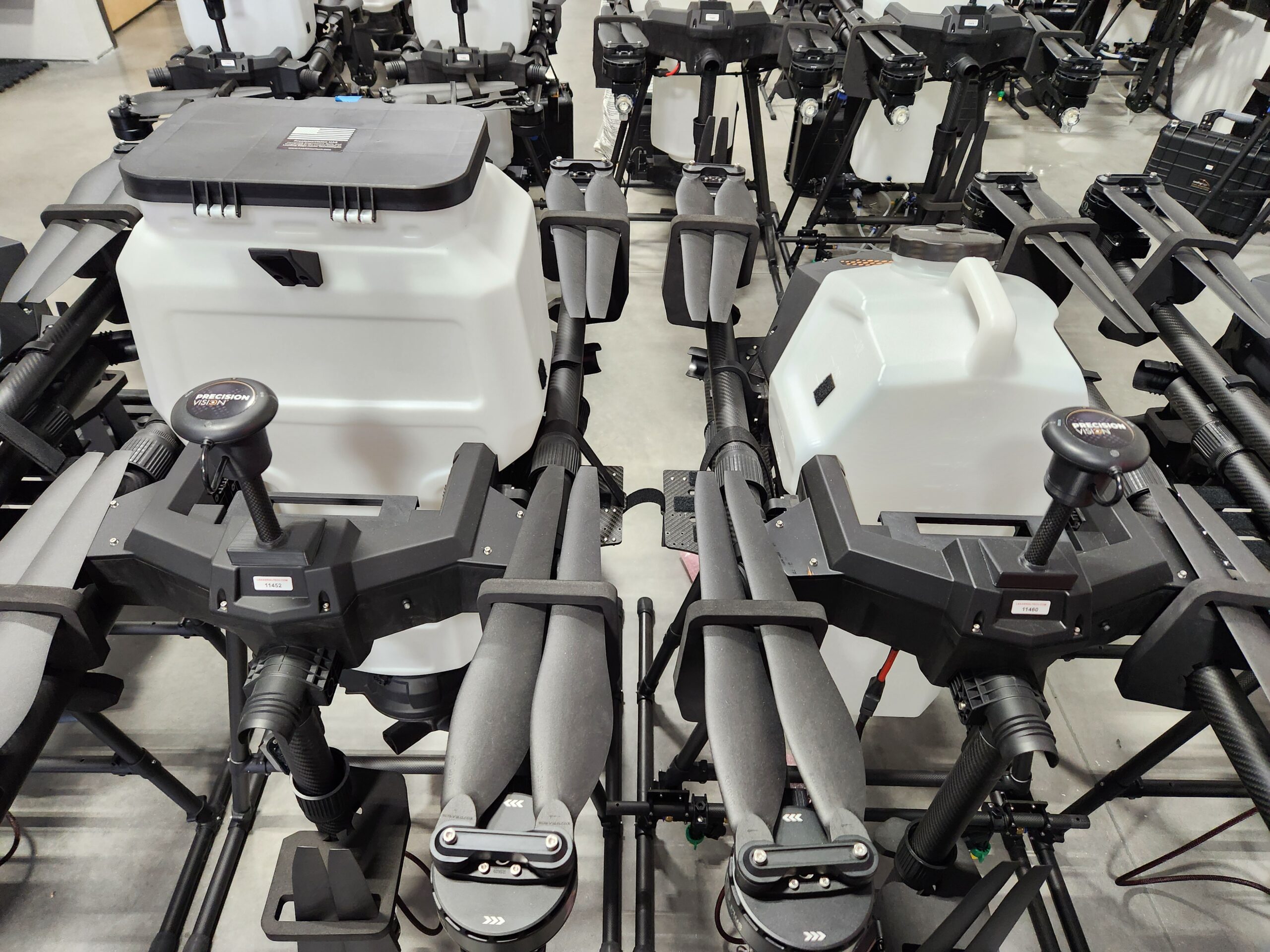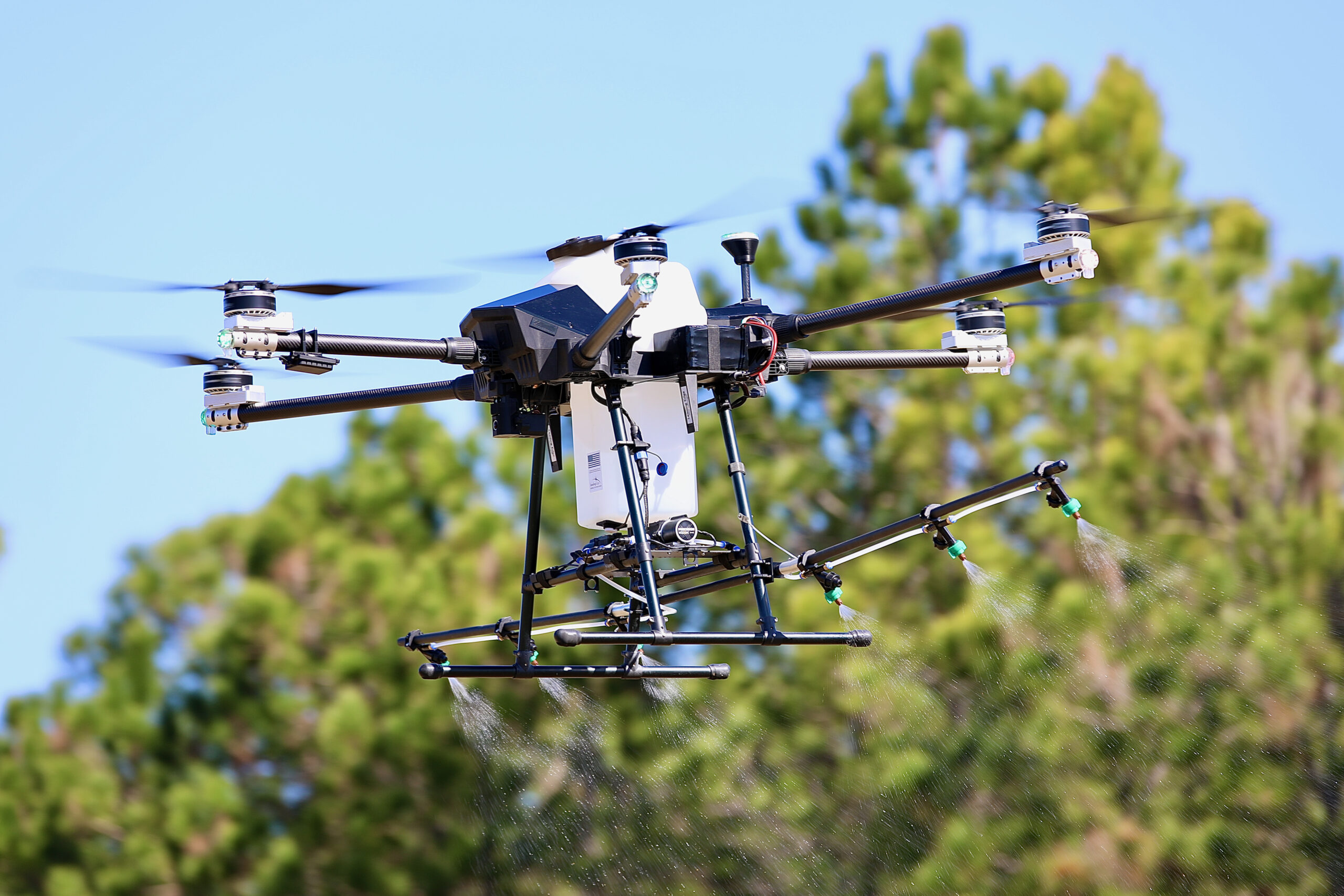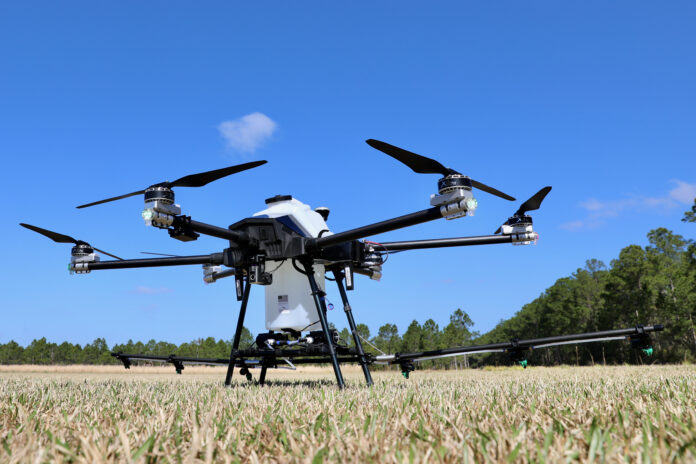William “Bill” Reynolds was born and bred in the mosquito control industry, as he says. With an academic background in computer science and marketing, Bill early on developed technologies to improve the efficiency of mosquito control as an employee of a company called ADAPCO, Inc., later becoming a business partner. Eventually, he sold his share in that company and in 2007 he started a company called Leading Edge, offering the mosquito control industry solutions in geospatial data management, analysis of droplet spectrum, GPS guidance systems, research equipment, ULV applications management and others.
In 2012, about when aerial application drones appeared in the market, Bill immediately saw their potential for mosquito control applications. He started experimenting with off-the-shelf drones, but very quickly became disappointed with their shortcomings.
So, in 2014, while still running Leading Edge, Bill started a second company, called Leading Edge Aerial Technologies (LEAT), to design and produce unmanned aerial systems (UAS) for mosquito control and agricultural applications, taking advantage of his many years of experience in the field.
Designed with Hands-on Experience
It took them three years to sell their first drone, a model called PV13 for its 13 pound payload, in 2017. This first production unit is in operation to this day. In the meantime LEAT was working directly with the FAA in order to become the first company in America to receive certification to perform UAS applications of products for mosquito control and agricultural and forestry pest management.
Yes, Leading Edge Aerial Technologies not only designs, manufactures and sells drones but also operates them, performing commercial applications for farmers and mosquito control agencies and taking advantage of this hands-on experience to improve the design of LEAT products. Bill believes that Leading Edge Aerial Technologies is the drone operator with the most acreage covered in the US so far. Presently, LEAT has seven drone pilots operating for customers; three in Florida, one in Arizona and three in California.
Right now, two UAS models are being offered by Leading Edge Aerial Technologies. The PrecisionVision 35X, or the PV35X, carries 25 pounds of product, either dry granular or liquids, while the PrecisionVision 40X, or PV40X, has a 40 pound capacity. Both PV35X and PV40X are similar designs, hexacopters with what LEAT calls Interchangeable Payload Systems, which are modular delivery systems that use different hoppers for granular products (like larvicides for mosquito control) and for liquids, which can be swapped in the field in about 10 minutes. Also, just like an ag plane, they use different booms for different applications. There is a boom with Micronair rotary atomizers for ultra low volume applications of adulticides in mosquito control and another with TeeJet hydraulic nozzles for applications in volumes of up to 5 GPA.
As LEAT’s mother company Leading Edge works with droplet analysis, great care and a lot of testing was used in the design of the LEAT drones delivery systems, to ensure optimum product deposition. The dry granular system uses a rotary spreader that can produce a swath of up to 90 feet when applying larvicides. For adult mosquito control, a boom with two Micronair electric rotary atomizers is used, which can produce a swath of up to 500 feet, while for other liquid applications, a boom with TeeJet nozzles can spray a swath of up to 21 feet (23 feet in the PV40X). Of course, these are the maximum swaths; narrower swaths might be required depending on product characteristics and application needs and rates.
Another advantage of using a spray boom instead of placing the nozzles under the rotors as some makers do, is that the boom in LEAT drones was carefully placed to avoid rotor vortices that in some situations can send the spray above the drone, covering it with chemicals and increasing drift potential – never a good thing. Despite this, LEAT drones are built to be water-resistant, so they can be washed with a garden hose, except for the collision avoidance sensors, which require a more delicate cleaning procedure.
Leading Edge Aerial Technologies outsources the carbon fiber parts in their drones, like the motor arms, and their electric motors. These are professional grade electric motors rated for 2,200 hours of operation. Bill says LEAT drones never had an electric motor failure.
All the flight control hardware in LEAT drones is either made in the US or in countries in the US Department of State “blue list”, while their software is all written in-house by the Leading Edge Aerial Technologies team. Therefore, their drones can be used by government agencies, unlike drones made in what the US Department of State calls “countries of concern”.
LEAT drones use a laser-based LIDAR system as their collision avoidance sensor, using radar only for their terrain following function, primarily to keep a constant height. That means LEAT drones can be safely operated near power lines, unlike other systems that use radar for collision avoidance and which are subject to interference from the intense energy of power lines. Besides that, LEAT drones stream “pilot view” video to its flight controller, the Ground Control Station. If the drone pilot decides the collision avoidance system is being “too bold”, he or she can take over control, fly the drone manually around the obstacle and then resume automatic flight.
The sturdy handheld Ground Control Station (GCS) is a dedicated piece of hardware, not a repurposed cell phone or tablet, and is made in the USA. The drone pilot can import/export polygons to be treated from any GIS (Geographic Information System) software through a memory card, or in a pinch, walk around the area using the built-in GPS in the GCS to plot the polygon points. The pilot can then select one of the flight patterns available – polygon grid, a customizable path or even spot treatments – enter swath width, ground speed, flight height, heading and polygon entry and exit points, and the autonomous flight system takes it from there.

PrecisionVision drones are powered by a set of two batteries made by a USA-based company specially for Leading Edge Aerial Technologies. Bill Reynolds points out that thanks to recent advances in battery technology that have made them cheaper and more capable, only five sets of batteries and a 9 KVa generator are needed to keep a LEAT drone working around the clock. Unlike other drones that often return to swap batteries before finishing their loads, LEAT drones usually finish their loads before their batteries run out.
Drone-in-a-Crate
LEAT drones are sent to customers in a crate, fully assembled and ready to fly; all the operator has to do is to spread open its motor arms and rotors before the start of an operation. Despite the simplicity of this “drone-in-a-crate” concept, as Bill calls it, Leading Edge Aerial Technologies will provide a three-day training course for the buyer of a new drone, so he can make the best out of his investment. This training course is also available for other interested parties, like new staff in an operation or the buyer of a second-hand unit.
Complementary, not Competitors
Bill Reynolds has a keen understanding of agricultural aerial applications; so much that he even made Leading Edge a member of NAAA, in order to join the aerial application community. Therefore, he knows that drones, even the larger ones being developed right now, cannot compete with ag planes in productivity, especially over large fields. But every operator now and then has to pass a prospective customer because the field is too small for an airplane to make a profit. Or worse, he faces the need to spray such a field in order to keep a valued customer satisfied. Often these fields are not only unprofitable for an airplane, but also downright dangerous, with power lines and obstacles all around.

Operating a drone as a complement to a conventional ag aircraft fleet solves this problem, and might even allow an operator to increase his or her customer base, adding clients who grow small crops while still making a profit. And judging by what Leading Edge Aerial Technologies technical salesperson Kelley Wittenberg says, this is exactly what some progressive operators are doing. According to Kelley, two thirds of LEATs drones are bought by operators already established under Part 137. Since the FAA requirements for a drone operator to operate under Part 137 are the same as for a conventional ag aircraft operator, it is easier to start if you are already certified. But if a LEAT customer is not yet Part 137 certified, LEAT will help out with the paperwork for it.

Agricultural drones will surely become more and more commonplace as new regulations and product labels are written for them. An established ag operator adding a drone to his or her fleet will be able to offer this service to their customers when required, instead of seeing them go to someone else. And buying an American-made drone like the ones made by Leading Edge Aerial Technologies will make the operator eligible for contracts with government agencies, besides protecting American jobs and our economy.





